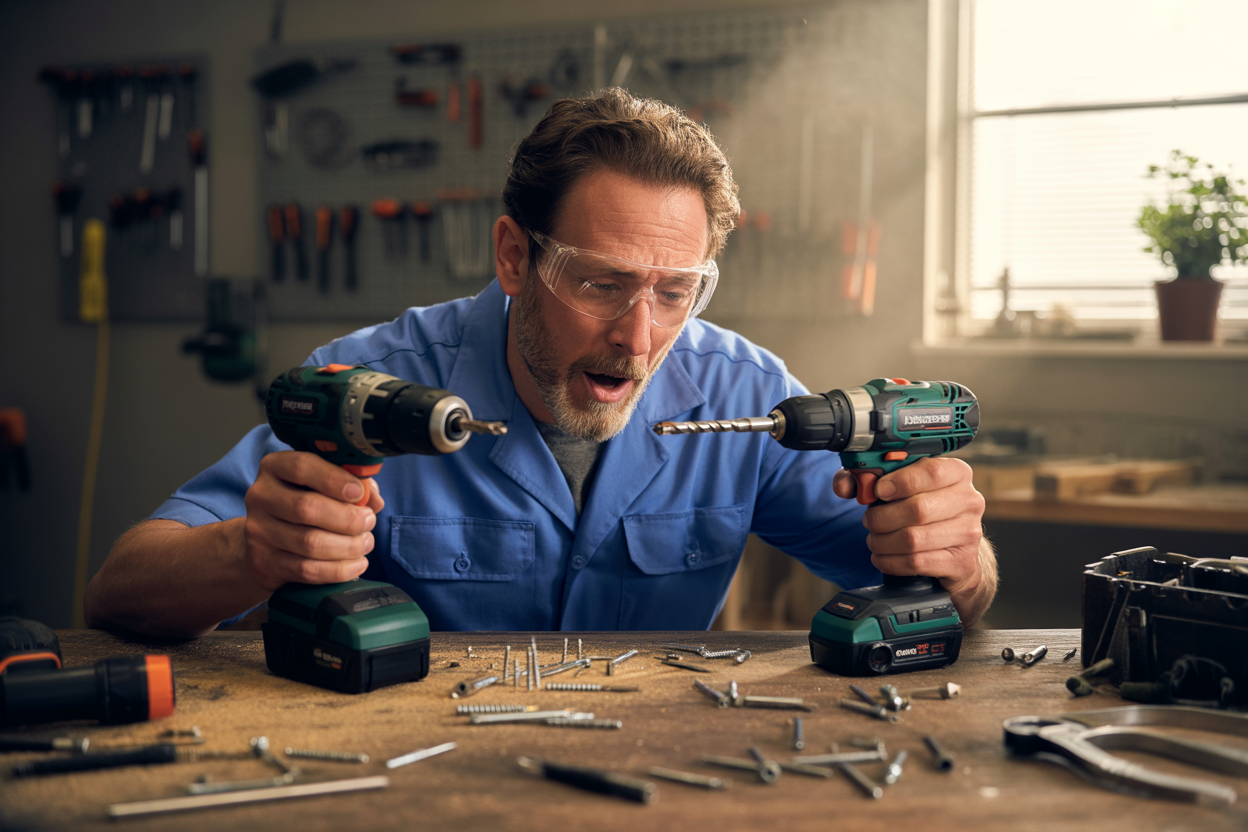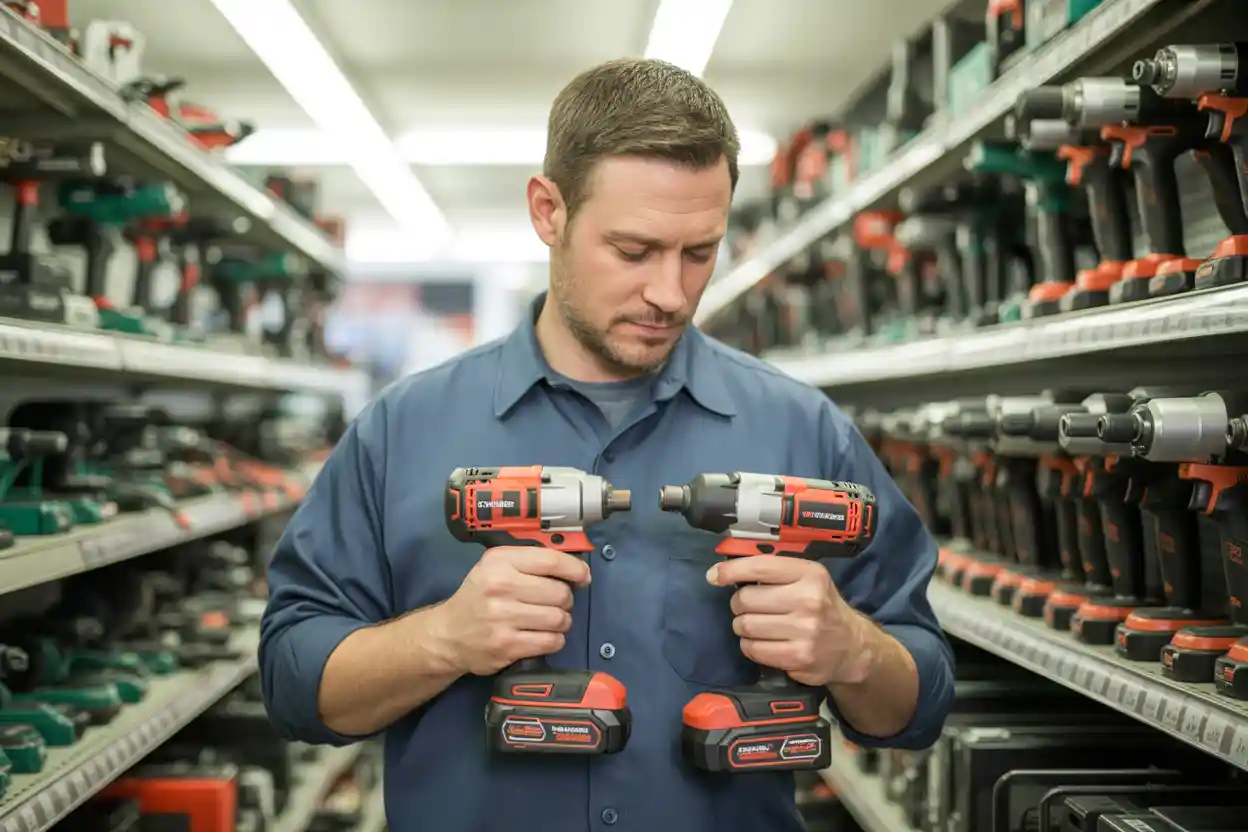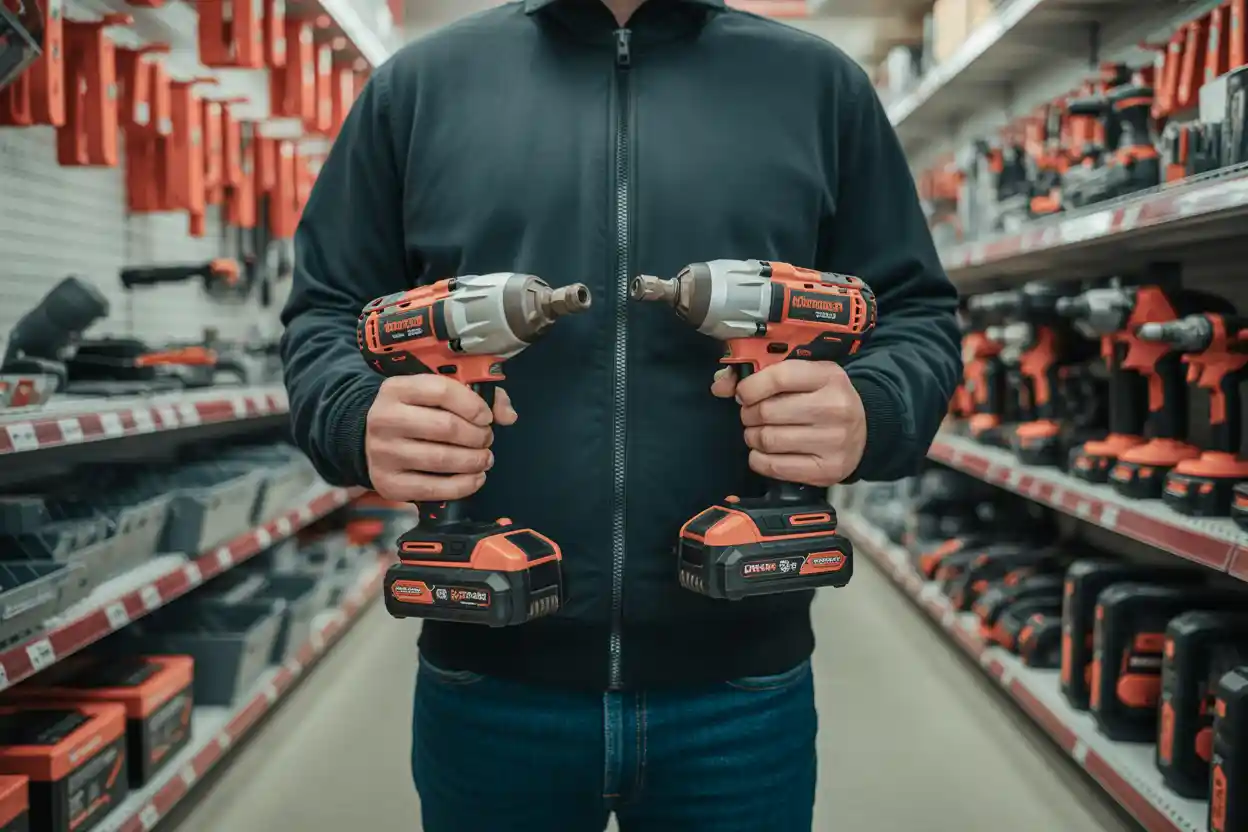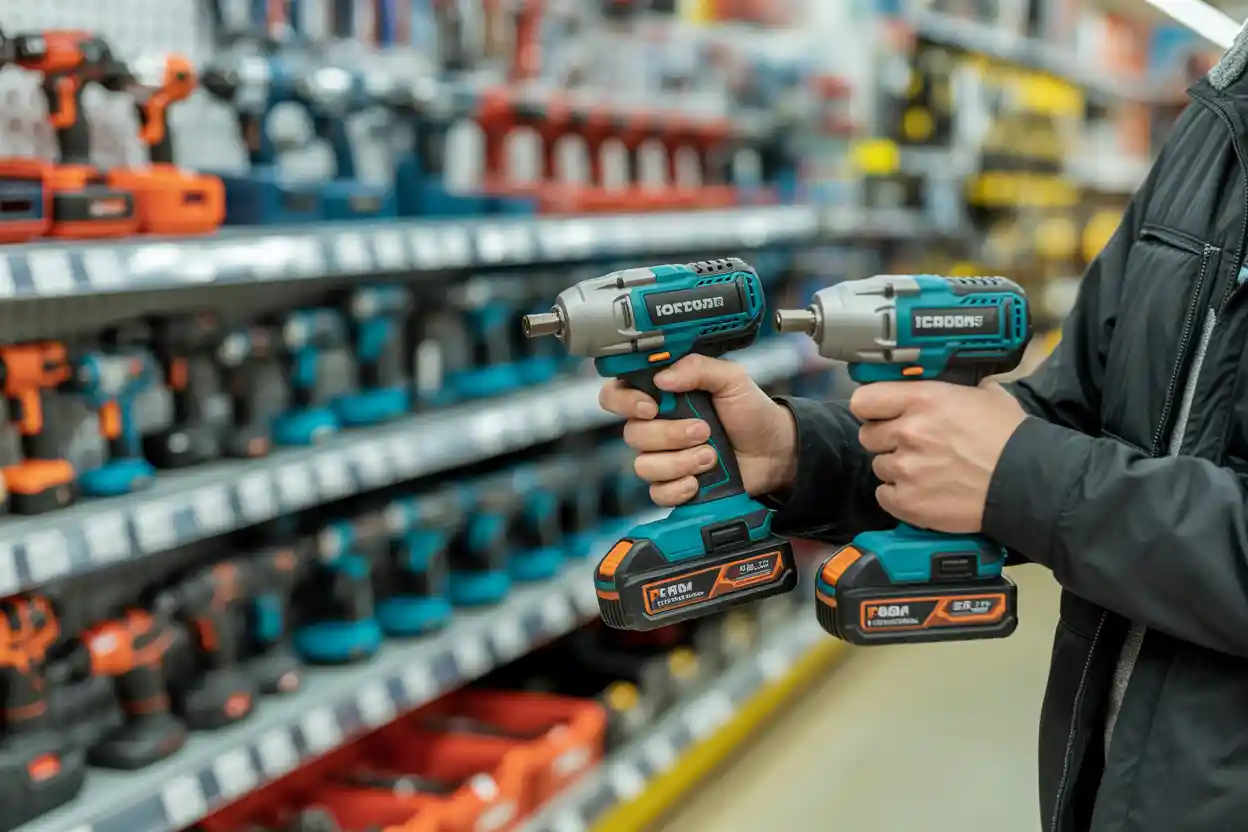
The first time I held a cordless drill1 and a cordless screwdriver2 side by side, I assumed they were basically the same. They both spin, they both drive screws—what’s the difference, right? But after a few projects, I realized they feel and work very differently.
A cordless drill is a multipurpose tool that drills holes and drives screws with adjustable torque and speed. A cordless screwdriver is lighter, smaller, and designed mainly for driving screws. Each suits different tasks depending on power needs, size, and control.
If you’ve been wondering which one to buy or stock, let’s clear up the confusion with real-world examples rather than just specs. I’ve used both in my own workshop and for YOUWE product demos, so I’ll share what I’ve learned.
Is a cordless drill the same as a cordless screwdriver?
When I started DIY jobs, I thought “cordless” meant universal. But it’s not quite that simple.
A cordless drill and a cordless screwdriver are not the same. Drills handle both drilling and screw-driving with higher torque, while screwdrivers are lighter tools built mainly for repetitive screw-driving with less power and smaller bits.

How they really compare
In practice, a cordless drill is like a small SUV—it can haul, tow, and carry. A cordless screwdriver is like a city bike—perfect for short, simple trips.
| Feature | Cordless Drill | Cordless Screwdriver |
|---|---|---|
| Power | Higher torque, adjustable | Low torque, fixed speed |
| Use | Drilling + screw-driving | Mainly screw-driving |
| Size | Larger, heavier | Compact, light |
| Bits | Accepts drill bits and driver bits | Driver bits only |
I use drills when mounting shelves into brick walls. I grab screwdrivers for assembling flat-pack furniture. Matching tool to task saves my hands and my patience.
What's the difference between a cordless drill and a cordless driver?
This question tripped me up early on because “driver” sounds like “screwdriver.” But in tool-speak, it’s different.
A cordless drill uses a rotating chuck for both bits and drills. A cordless driver (impact driver) delivers high torque with quick bursts, making it better for long screws or tough materials. Drivers lack the chuck needed for drilling holes.
Understanding the “driver” label
The first time I used an impact driver on decking screws, I was surprised at the hammering feel. That’s the internal mechanism delivering extra torque bursts.
Here’s how I explain it to new buyers:
- Cordless drill: versatile, general-purpose
- Cordless driver (impact): high-torque screw-driving only
- Cordless screwdriver: light, everyday screw-driving
If you’re stocking tools for customers, make sure product pages show this difference clearly. It saves returns and confusion.
Can I use a drill as a screwdriver?
I do it all the time, but with a few caveats.
Yes, you can use a drill as a screwdriver by fitting it with a driver bit and lowering the torque setting. This prevents overdriving screws, stripping heads, or damaging materials.
My go-to settings
I once cracked a cabinet door by using my drill at full torque. Now, before switching from drilling to screw-driving, I:
- Switch to the lowest clutch setting
- Use the lowest speed gear
- Test on scrap material
This gives me control like a screwdriver but keeps the drill’s power ready when needed. Distributors can include simple usage guides in their packaging—customers appreciate it.
Can I just use a screwdriver instead of a drill?
Sometimes yes, but it depends on the job.
A cordless screwdriver can replace a drill only for light screw-driving tasks. It cannot drill holes or drive long screws into hard materials because it lacks torque and a chuck for drill bits.
When a screwdriver is enough
I use cordless screwdrivers when assembling kitchen cabinets or installing outlet covers—quick, light tasks. But if I need to drill pilot holes or drive screws into hardwood, the screwdriver simply stalls.
| Task | Suitable Tool |
|---|---|
| Assembling furniture | Screwdriver |
| Drilling holes in wood or metal | Drill |
| Driving long screws into hardwood | Drill or impact driver |
Understanding these limits helps you pick (or recommend) the right tool. It also avoids complaints about “weak” tools that are simply misused.
Conclusion
Cordless drills and screwdrivers overlap but aren’t interchangeable. By matching tool to task—whether for your own projects or for your customers—you save time, protect materials, and make the work feel easier and more precise.






